Bob Batchelor's Blog, page 3
January 31, 2025
How Women in Music are Shaping the Industry

CC0 Licensed Image Courtesy of Pexels
Women in music have often played second fiddle next to men. However, the past couple of decades have seen something of a shift in a now almost female-led industry. The rise of stars like Beyonce has been nothing short of inspiring. From female empowerment within the industry to making themselves a brand, here are some ways women are dominating music today.
Working With the Right MentorsExecutives in the music industry are often notorious, sometimes beloved, but consistently excellent at what they do. Many female artists owe some of their success to the mentors they work with. For instance, music industry legend Clive Davis signed Aretha Franklin, Dionne Warwick, and Alicia Keys. Imagine a world where we didn’t have those amazing artists! Some female mentors worth mentioning include Gail Vereilles, Emily Lazar and even Dolly Parton.
The Rise of Female EmpowermentEmpowerment in music was something shied away from for a long time. What this means is subjective for most. But for many women, it meant the expression of femininity in any way you want. Whether you prefer somewhat sexualized imagery in the case of Madonna or understated female spirit with artists such as Carly Simon, there has been a growing sentiment around empowerment. Today, preference extends to trans-female artists such as Kim Petras.
Building on Influential Women in MusicDespite lingering sexism in genres such as rock and roll, the success of female artists in the 21st century is phenomenal. In 2023, 48.5% of Top 10 weekly singles of the best-selling artists were women. This includes such artists as Miley Cyrus and Lana Del Ray, both of whom often cite musical legends of yesteryear as their inspiration for working today. Artists such as Stevie Nicks and Jim Morrison are inspirations, with younger artists collaborating with older ones.
Becoming More Business-SavvyOne of the more interesting developments in modern music for women in the industry is the businesswoman. More than just a singer, many modern and younger female artists are harnessing the power of an online presence. Today, women like Rihanna build upon their musical talents with brands. Today, Rianna is worth $1.4 billion, most of which comes from her fashion and makeup brand, Fenty. Taylor Swift is also said to be a top-notch negotiator!
Increased Representation in the IndustryWhere the music industry was once dominated by men, it appears that this is no longer the case. Certain artists have opened the sector to allow females to flourish, with much stronger representation. Women such as Beyonce, Taylor Swift, and Billie Eilish advocate for more female-led initiatives in music for support staff, engineers and producers. Beyonce, in particular, is known for having an almost all-female crew when she performs and goes on tour.
SummaryWorking with passionate mentors is one of the reasons why women in music today have flourished and dominated the charts. Inspirations from the past are also often cited as the reasons why many younger artists do what they do. However, there is also much more awareness and female representation in the industry today because of artists like Beyonce.
I use Amazon affiliate links on this site—mainly links to books or other cool things. And if you buy via my links, it supports the site with no extra cost to you. This post is sponsored by FAT JOE PUBLISHING. I was compensated for this post, but reviewed it and regard the article as a natural fit for my readers.
October 22, 2024
THE AUTHENTIC LEADER: FAQs
In The Authentic Leader, I introduce the concept of deep leadership, which emphasizes authenticity, transparency, and empathy in the workplace and beyond. I contend that traditional leadership models, often characterized by command-and-control styles, are no longer effective in today’s rapidly changing work environments. The new era of leadership requires authenticity at its heart.
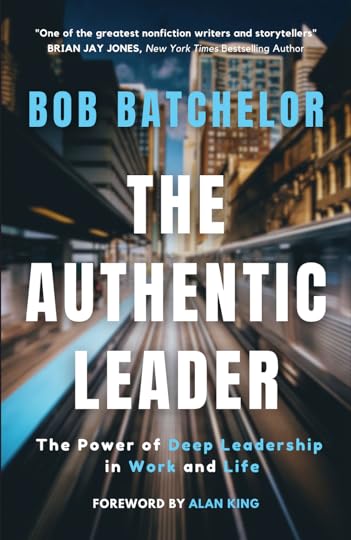
What is Authentic Leadership?
Authentic leadership is a leadership style characterized by genuineness, transparency, and empathy. It emphasizes building deep connections, fostering trust, and leading with integrity. Instead of adhering to traditional, top-down leadership models, authentic leaders prioritize self-awareness, reflection, and ethical decision-making.
How Does Integrity Contribute to Authentic Leadership?
Integrity forms the cornerstone of authentic leadership. It’s about aligning actions with values, building trust through transparency, and making ethical decisions even when facing challenging situations. Leaders with integrity inspire their teams, foster a culture of honesty, and contribute to long-term organizational success.
What is Deep Leadership and How Does it Work?
Deep leadership focuses on the combination of thoughtful action and reflection. It asks leaders to go beyond surface-level solutions and engage in critical thinking, informed decision-making, and understanding the nuances of human interaction. By embracing contemplation and embracing ambiguity, deep leaders navigate complex situations with clarity and purpose.
What Role Does Empathy Play in Deep Leadership?
Empathy is essential for deep leadership. By actively listening to understand perspectives, cultivating compassion, and building meaningful relationships, leaders create a supportive and inclusive environment. Empathy allows leaders to connect with their teams on a deeper level, fostering trust and facilitating open communication.
How Can I Cultivate a Moral Compass as a Leader?
Cultivating a moral compass involves:
Identifying and Reflecting on Your Values: Determine what matters most to you and how these values guide your actions.
Seeking Ethical Frameworks: Today’s business leaders must prioritize an ethics-driven worldview, which includes doing the inner work necessary to understand ethical decision-making.
Engaging in Self-Reflection: Regularly assess your decisions, considering their ethical implications and potential long-term impact.
Seeking Feedback: Invite constructive criticism from trusted colleagues or mentors to gain different perspectives on your actions.
What is the Importance of Stillness in Leadership?
Stillness, in the form of reflection and mindfulness, is crucial for effective leadership. It allows leaders to:
Gain Clarity: Stepping back from the daily flurry allows for perspective and insightful problem-solving.
Reduce Stress and Enhance Focus: Mindfulness practices contribute to emotional regulation and improved concentration.
Connect with Values: Quiet reflection provides space to reconnect with core values and ensure alignment between actions and beliefs.
How Can Storytelling Enhance Leadership?
Storytelling is a powerful leadership tool that:
Connects with Audiences: People are naturally drawn to narratives—it is a central facet of human DNA: We are hardwired for stories—allowing leaders to communicate messages in an engaging and memorable manner.
Builds Trust and Authenticity: Sharing personal experiences and vulnerabilities humanizes leaders and fosters stronger connections.
Inspires Action: Compelling stories have the power to motivate and inspire teams to strive toward common goals.
How Can Leaders Embrace Lifelong Learning?
Lifelong learning is essential for leadership growth. Leaders should:
Cultivate Curiosity: Actively seek out new information and diverse perspectives, embracing opportunities to expand knowledge and skills.
Seek Feedback and Embrace Constructive Criticism: View feedback as an opportunity for growth and actively solicit input from others.
Adapt and Remain Open to Change: The business landscape is constantly evolving. Leaders need to embrace adaptability and continuously refine their approaches.
Lifelong learning is critical because today’s leaders are being asked to serve as role models for others at work, home, and in their communities. Authentic leaders can (and should) drive meaningful change in the areas they can. Lifelong learning—expanding one’s mind to boundless ideas and joys—provides the perspective necessary for excellence in whatever sphere the leader chooses to be a part of.
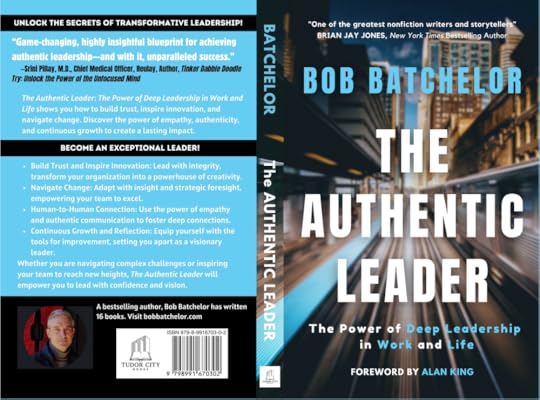 In celebration of the publication of The Authentic Leader: The Power of Deep Leadership in Work and Life, the ebook is on sale at a 50% discount. Order here.
In celebration of the publication of The Authentic Leader: The Power of Deep Leadership in Work and Life, the ebook is on sale at a 50% discount. Order here.
October 14, 2024
BOB BATCHELOR LAUNCHES NEW PUBLISHING VENTURE: TUDOR CITY BOOKS

Tudor City Books
Acclaimed author Bob Batchelor, renowned for his expertise in cultural history and biography, has launched Tudor City Books, a new publishing company headquartered in Raleigh, North Carolina. Specializing in a range of subjects, including crime fiction, entertainment and pop culture history, memoir, and biography, Tudor City Books aims to bring exceptional works to a broader audience.
Tudor City Books is founded on an “author-first” philosophy, ensuring that every book it publishes is crafted in close partnership with its authors. This commitment to high-quality publishing is enhanced by Batchelor’s deep editorial experience and his reputation as both an acclaimed editor and book doctor. He has a long history of working with authors to bring books to life, including the five book series he launched in partnership with Rowman & Littlefield, most notably the renowned “Cultural History of Television.”
“Tudor City Books is the culmination of a lifetime in publishing and a way to help more authors tell stories that deserve to be heard,” said Batchelor, Founder of the new imprint. “I’ve worked closely with authors and editors to bring hundreds of books to print. Our focus is on creating beautifully produced books that will resonate with readers and showcase their talent.”
A Unique Opportunity for Authors
Tudor City Books provides a collaborative approach, where authors receive personalized attention throughout the entire publishing process. From editorial guidance to strategic marketing support, the company’s mission is to empower writers and elevate their works to their fullest potential.
Batchelor’s hands-on involvement in the editing and promotion of each title is a key differentiator of Tudor City Books. With his impressive track record of bestselling works and industry knowledge, Batchelor brings a wealth of experience, helping authors navigate the ever-evolving world of publishing while staying true to their creative vision.
The name of the company is an homage to Joseph W. Percival (1924-2005), a journalist who worked for the New York Daily News and several newspapers in Europe over the course of a lifetime spent as a journalist. Percival was the father of Batchelor’s wife and partner, Suzette Percival, a vintage and antiques expert who founded the Spot of Vintage lifestyle brand. He lived in the storied Tudor City neighborhood in Manhattan, an area his daughter remembers fondly for its rich mix of history and beauty.

The Authentic Leader by Bob Batchelor, published by Tudor City Books
First Publication – The Authentic Leader: The Power of Deep Leadership in Work and Life
Along with the launch, Tudor City Books is proud to bring out its first publication: The Authentic Leader: The Power of Deep Leadership in Work and Life by Bob Batchelor. This marks Batchelor’s debut leadership book and explores the essential qualities of deep leadership, emphasizing empathy, resilience, and authenticity. The Foreword is written by Alan King, CEO of Workplace Options, the world’s largest holistic well-being company with 113,000 customers and 83 million lives under care.
Drawing on Batchelor’s decades of research, writing, and strategic communications teaching and thought leadership, The Authentic Leader provides a fresh perspective on leadership in today’s complex world. The book provides actionable strategies for leaders to inspire change, build trust, and cultivate employee engagement through inclusive leadership and creating psychologically safe workplaces. As Batchelor’s first release under the Tudor City banner, it reflects the high standards of both authorial partnership and quality production that the company is committed to delivering.
ABOUT BOB BATCHELOR
Bob Batchelor is an internationally acclaimed cultural historian, biographer, and author of numerous bestselling books, including Stan Lee: The Man Behind Marvel and The Bourbon King: The Life and Crimes of George Remus. Known for his deep research and narrative storytelling, Batchelor has captivated readers around the world with his books on history, entertainment, and popular culture. The Authentic Leader is his 15th book. In addition, Batchelor has edited 19 book collections.
With the launch of Tudor City Books, Batchelor is extending his passion for storytelling and his commitment to high-quality, author-centric publishing. The company is poised to become a major player in the literary world, with a focus on amplifying voices and stories that deserve to be heard.
For more information about Tudor City Books, author inquiries, or to purchase The Authentic Leader: The Power of Deep Leadership in Work and Life, please visit bobbatchelor.com.
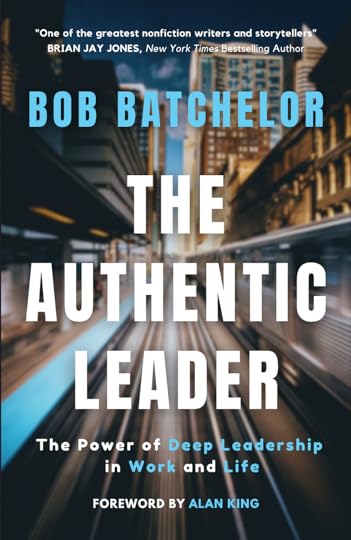
The Authentic Leader by Bob Batchelor, Foreword by Workplace Options CEO Alan King
July 5, 2024
JIM MORRISON, 1943-1971
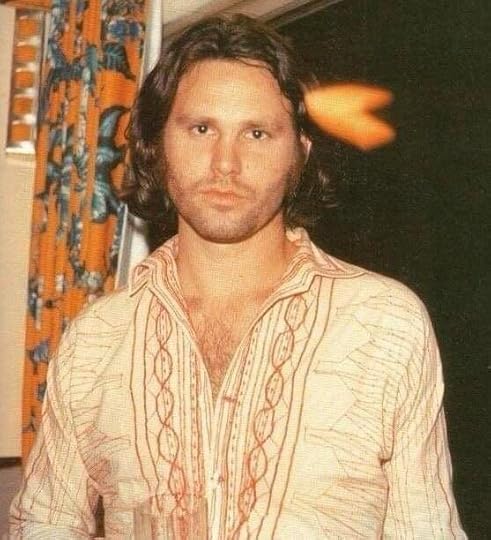
Most of the world would not find out about Morrison’s mysterious death until July 9.
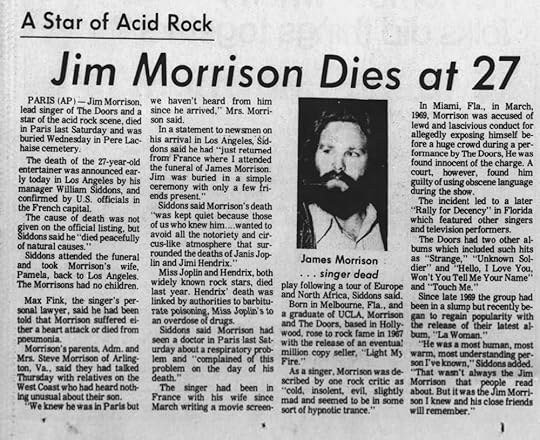
In April 1971, Elektra released L.A. Woman. The album reached number nine on the Billboard album chart and then remained in the top 200 for 36 weeks. Later, in June, “Riders on the Storm” came out as a single and eventually hit number 14.
Before he left for France, Jim gave an impromptu interview to Ben Fong-Torres, an editor at Rolling Stone. The singer explained that the Doors were “at a crossroads of our career,” particularly since young audiences wanted new music by new bands, not an “anachronism” like their group. He spoke of making movies and other interests. By most accounts, Morrison’s future plans didn’t seem to include the Doors.
Jim arrived in Paris on June 12, 1971. He went to Pam’s room at the Hotel George V, which he likened to a whorehouse. She wasn’t there. Before long he was across the street, reportedly drinking whiskey—one after another.
One morning John Densmore answered the phone. It was Jim calling from France. He wanted to find out how L.A. Woman was doing. Densmore told him how the first single had become a hit and that the album was getting a lot of airplay. Jim replied, “I’ll be back and we’ll do some more.”
Three weeks later he would be dead.
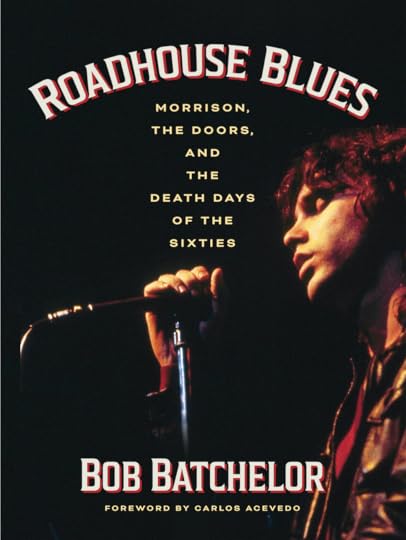
Roadhouse Blues: Morrison, the Doors, and the Death Days of the Sixties by Bob Batchelor (Hamilcar Publications)
June 3, 2024
DECODING AI FOR CEOS -- FROM UNCERTAINTY TO STRATEGIC INNOVATION

CEOs are under constant pressure as they navigate complex decisions across an interconnected, global landscape. Artificial Intelligence (AI) presents a solution brimming with potential, yet shrouded in uncertainty — even with all the hype and information written about the new technology.
What I provide below is a type of “decoder ring,” providing senior leaders with ideas to unlock AI’s power and, as a result, propel their businesses forward.
Caught in the Cross-hairs: The AI Conundrum
A recent PwC Global CEO Survey paints a stark picture:
Nearly half (45%) fear their companies will not survive without significant changes.
Despite acknowledging AI’s vast potential for “huge productivity benefits,” only 32% have broadly adopted it.
This paradox exposes a fundamental dilemma. CEOs recognize the need for change and view AI as a potential driver. However, anxieties surrounding human resources, ethical considerations, and the sheer complexity of implementation create a significant roadblock.
Humanizing AI: Allaying Employee Fears
The human element is paramount. A significant concern is job displacement due to automation. CEOs must address these fears head-on by emphasizing how AI complements human capabilities. In other words, AI is a benefit across processes, but does not provide the human connection essential for greatness.
Instead, imagine AI as a tireless research assistant, freeing up employees to focus on creative problem-solving and strategic tasks. Transparency is crucial. Openly communicating AI’s role and its potential to enhance, not replace, human talent fosters trust and buy-in.
Aligning AI with Culture: A Foundation for Sustainable Success
For AI to thrive, it must be integrated seamlessly into the existing organizational culture. This is a non-negotiable.
Superimposing AI onto a flawed management structure is a recipe for disappointment. CEOs must ensure alignment between AI goals and corporate values. AI should not be used to mask underlying issues or deflect accountability. One of the reasons people generally distrust AI at the moment is that too many leaders are using AI implementation as an excuse for bad management decisions. AI should not be a scapegoat for mass layoffs!
AI should not be a scapegoat for mass layoffs!— Bob Batchelor
The AI Trajectory: Embracing the Learning Curve
Research by EY reveals that 90% of organizations are in the early stages of AI adoption. This nascent phase is vital. Instead of fixating on immediate results, senior leaders should focus on building an “AI-ready” enterprise. The focus here is establishing a culture of experimentation, embracing a “learn-by-doing” approach through pilot projects, and continuously refining strategies as AI capabilities evolve.
Actionable Insights for CEOs: Building an AI-Powered Future
Embrace Transparency: Manage expectations openly and honestly. As EY highlights, building confidence in AI systems is crucial. Communicate the potential risks alongside the immense benefits.
Upskill Your Workforce: Invest in training and education programs to equip your team to collaborate effectively with AI tools. A skilled workforce remains your greatest asset.
Start Small, Scale Smart: Taking on too much can have devastating consequences. Begin with pilot projects in well-defined areas to gain valuable insights before embarking on a wider rollout.
A Glimpse into the Future
As AI matures, its impact will be nothing short of transformative. Here’s what leaders can expect:
AI as a Strategic Partner: AI will evolve beyond automation, becoming a trusted advisor, providing real-time insights, predicting market trends, and optimizing operations with unheard-of efficiency.
The Age of Hyper-Personalization: AI will enable businesses to tailor products and services to individual preferences at a granular level. The result should be deeper customer relationships and stronger loyalty.
The Imperative of Ethical AI: As AI becomes omnipresent, ethical considerations become paramount. CEOs must prioritize data privacy, ensure algorithmic fairness, and align AI practices with their company’s core values.
The Final Word: A Cascade of Innovation
AI is on path to harmonize innovation and strategy at a higher level than previously imaginable. The key is in harnessing the power of AI, while also recognizing the irreplaceable value of human ingenuity. By decoding AI’s potential and fostering a collaborative environment, CEOs can unlock unprecedented growth and sustainable success.

May 25, 2024
THE HUMAN EDGE: WHY EMPATHY IS THE NEW LEADERSHIP CURRENCY
Mix together a global pandemic, ongoing warfare, climate crisis, racial reckoning, and political unrest with a difficult global economy and the outcome will necessitate widespread change.
One change is the downfall — and hopefully final act — of autocratic leadership. The single leader barking out orders from on-high is fading into irrelevance.

Today’s business landscape demands a new kind of leader — one who prioritizes the human element and wields a powerful tool: empathy.
Today’s business landscape demands a new kind of leader – one who prioritizes the human element and wields a powerful tool: empathy.— Bob Batchelor From Command to Collaboration
Gone are the days of rigid hierarchies and top-down decision-making. The new leadership paradigm embraces collaboration. Leaders function as facilitators, encouraging diverse voices and perspectives to contribute to strategy. This fosters innovation and leverages the collective intelligence of the entire organization.
Leadership as an Emotional JourneyLeadership can no be longer entirely focused on financial goals. The new workplace, where psychological safety is at the heart of culture, must center on an environment where employees feel valued and heard. This requires leaders to understand the human equation.
The most effective leaders connect with their teams on an emotional level, recognizing that employees are not just cogs in a machine, but unique people with dreams, anxieties, and aspirations. They want more than anything to be engaged and especially what their leaders expect of them.
Why Empathy MattersEmpathy has transformed from a so-called “soft skill,” to an essential leadership competency. Managers and supervisors who can understand the emotional landscape of their teams — their fears, frustrations, and motivations — are the ones who can inspire trust, navigate conflict effectively, and unlock human potential.
The human connection is what people desire, particularly as the media narrative focuses on the power of Artificial Intelligence (AI) to transform lives — for good and bad. The story being told is that AI is going to steal jobs and make people in many industries obsolete. The fear must be countered with great leadership!
Fear must be countered with great leadership!— Bob Batchelor Building Trust Through Emotional Intelligence
Authenticity is a cornerstone of empathetic leadership. Leaders who walk the talk and embrace vulnerability create a safe space for open communication. This authenticity fosters psychological safety, a critical ingredient for building trust.
However, the idea of psychological safety is not simply theoretical. The “real-world” business outcomes range from better recruitment and retention and brand value to fostering a culture of innovation.
Empowering Teams Through Shared VisionEmpathetic leaders understand the importance of shared vision. An executive can certainly guide the inculcation of an inclusive culture and organizational well-being, but it can’t be done alone.
Leaders should clearly articulate the organization’s goals, but they should involve their teams in the process. This sense of collective ownership and engagement motivates employees to go the extra mile. They are going to share their ideas with one another and communicate better — both keys in remote and hybrid workplaces.
Leading with Flexibility: The Adaptability AdvantageThe business world is always evolving. Leaders who thrive in this environment are those who can adapt quickly. They are open to new ideas, willing to experiment, and able to learn from both successes and failures.
Adaptability, however, can’t happen at the expense of core values. Strong leaders remain anchored by the organization’s mission, ensuring that change serves a strategic purpose.
Investing in Human Potential: Beyond the Bottom-LineEmployees are not simply a resource or number on a spreadsheet. They are the driving force behind a company’s success.
The most effective leaders recognize the human element and prioritize employee well-being. Their goal seems easy on paper, but is more difficult to create — a healthy work-life balance, opportunities for professional development, and a sense of belonging.
 A New Era: Leading with Humanity
A New Era: Leading with HumanityThe skills that define effective leadership in the 21st century are empathy, collaboration, adaptability, and a commitment to human-centered well-being. Leaders who cultivate these qualities better navigate the complexities of the modern business world. They will reap the benefits of a thriving work environment where employees are empowered to do their best work.
Leadership is changing. Today and tomorrow, the talent means leading change by building a future where empathy is the new leadership currency.
May 10, 2024
ROADHOUSE BLUES: MORRISON AND THE DOORS LIKE YOU'VE NEVER SEEN BEFORE!
Roadhouse Blues: Morrison, the Doors, and the Death Days of the Sixties won the 2023 IPA Book Award in Music and has been lauded by critics, readers, and Doors aficionados across the globe.
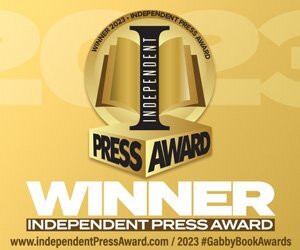
2023 Independent Press Award for Roadhouse Blues
REVIEWS“Fascinating, informative, extraordinary, and essential reading for the legions of Jim Morrison fans.” – Midwest Book Review
“Bob Batchelor writes with great eloquence and insight about the Doors, the greatest hard-rock band we have ever had, and through this book, we plunge deeply into the mystery that surrounds Jim Morrison. It is Batchelor’s warmth and compassion that ignites Roadhouse Blues and helps explain Morrison’s own miraculous dark fire.” – Jerome Charyn, PEN/Faulkner Award finalist

Splash page for Roadhouse Blues, designed by the eminent Brad Norr
“The most important book for Doors fandom since No One Here Gets Out Alive—and incomparably better! Grouped with Ray, Robby, and John’s books, this is the fourth gospel for fans of The Doors.” – Bradley Netherton, The Doors World Series of Trivia Champion and host of the “Opening The Doors” podcast
“Batchelor writes well and his narrative flows smoothly. His work is an insightful look at the Doors as creative artists and a compelling portrait of Morrison.” – Thomas Hauser, Pulitzer Prize and National Book Award nominee
“Smart, engaging…Batchelor has a technique and perspective that runs through his work: paint a vivid description of what happened, but then, more than a mere journalist or biographer, delve into how it happened and then why it happened. The what is documentarian; the how, and especially the why, require the kind of analysis with imagination that Roadhouse Blues provides.” – Jesse Kavadlo, PopMatters

Roadhouse Blues, published by Hamilcar Publications
April 19, 2024
JIM MORRISON'S LAST ALBUM, L.A. WOMAN RELEASED 53 YEARS AGO TODAY!
The Doors released L.A. Woman on April 19, 1971, and Jim Morrison would be dead about 10 weeks later. The last album during his lifetime solidified the band’s standing and the singer’s legacy as an iconic figure in rock ‘n roll history.
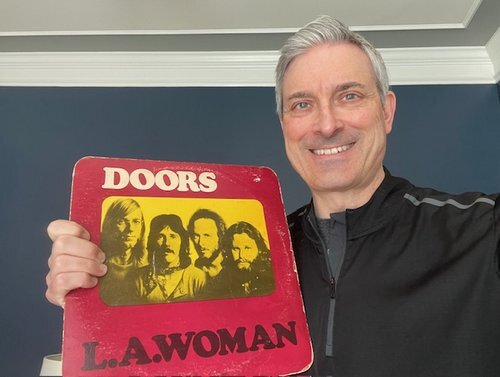
Roadhouse Blues author Bob Batchelor with L.A. Woman
EXCERPT FROM ROADHOUSE BLUES: MORRISON, THE DOORS, AND THE DEATH DAYS OF THE SIXTIES ( HAMILCAR PUBLICATIONS )While incarceration loomed, Jim and the band got back into the studio. Ray, Robby, and John understood the seriousness of the situation. Densmore claimed that saving Jim was the band’s first priority: “Fuck, man, if we don’t get an album or two more out of Jim, so what? Maybe we’ll save his life.” They thought the creative process would reverse the spiral. The strategy had worked with Morrison Hotel.
Ironically, the album that would later be named after their adopted home—L.A. Woman—would be made without longtime producer Paul Rothchild. He hated the songs the band planned to use for the new record, telling them, “It sucks…it’s the first time I’ve ever been bored in a recording studio in my life.” At a dinner, according to Hopkins and Sugerman, Rothchild told them that they should produce themselves with Botnick’s assistance.
Although Rothchild may have disliked the tracks and sound, some felt that he still mourned Janis and was afraid to watch Jim’s journey down a similar path toward destruction. He also wanted a more controlled sound and believed the band couldn’t deliver, based on Jim’s commitment to partying and the tension that it caused with Ray, Robby, and John.
Rothchild had a point. Krieger remembered Jim’s drinking, saying, “When he got too drunk, he would become kind of an ass. It got harder and harder to be close with him.” The band kind of lined up on one side— on the other, Jim and his increasing number of drinking buddies and hangers-on. In his memoir, Ray called them “reprobates…slimeballs, and general Hollywood trash.”
Still, Botnick agreed to co-produce the next album, and the band went to work to perfect the demos and create several more. They set up shop at the Doors offices at 8512 Santa Monica Boulevard, which felt safe and secure for the band. With Jim across the street at the fleabag Alta Cienega Hotel, Robby remembered that the singer was reenergized by the process. Like the previous album, Botnick wanted to get a live feel. He said, “Go back to our early roots and try to get everything live in the studio with as few overdubs as possible.”

The Doors perform at the Hollywood Bowl
Continuing the creative process that had worked on Morrison Hotel, the band wrote songs together, often from poems Jim had been working on over the years. Adding to the new vibe, they used Elvis’s bassist Jerry Scheff and rhythm guitarist Marc Benno to add a deeper, more lush tone. Morrison sang in the adjoining bathroom to get the sound he wanted. To capture the desired live spirit, they didn’t do many takes and kept overdubs to a minimum.
Morrison’s concept of L.A. Woman centered on imagining the city as a sexy woman, his way to pay homage to the “City of Lights.” They also continued to explore what it meant to live on the West Coast and in the contemporary world. The sound was expansive, more alive than what they had done recently, despite the weight of Jim’s conviction.
The title track “L.A. Woman,” according to Densmore, epitomized the new sound, particularly Jim’s anagram for his name. “‘Mr. Mojo Risin’ is a sexual term,” the drummer explained. “I suggested that we slowly speed the track back up, kind of like an orgasm.” For Robby, it was the teamwork that pulled the best work from the band. “The title track was distilled from jam sessions, with all of us contributing equally,” he remembered. “Jim started with a handful of lines and added lyrics as he went while John kept it interesting with time changes and Ray and I harmonized on the melody and traded solos.”
In 2022, the editors at Bass Player named the bassline of “L.A. Woman” one of the forty greatest of all time. “True to the production values of the day, Ray Manzarek’s throbbing keyboard bass is all low frequencies and no mids, adding to its thunderous presence,” they said. That unforgettable sound “takes everything that was best about The Doors—acid-drenched psychedelia, a threatening blues edge and that era-defining drone—and anchors it all with a rock-solid bassline.” The enduring success of the song and its ranking among the best ever recorded is a demonstration of what the Doors could still create, particularly in their stripped-down, blues-infused era.
Despite the stress Jim experienced while putting the album together, the power of his vocals propelled the record. Morrison sounded lively—perhaps even sober—between takes. “I don’t follow orders. I’m just a dumb singer,” he playfully told his bandmates during one interval. Yet under Botnick’s guiding hand, songs like “L.A. Woman” came together, as the producer explained, with “a little bit of woodshedding.”
According to Robby, much of the beauty of “L.A. Woman” came from how he worked with Jim to bring the vocals and guitar into sync. “During the verses, I do these little answer lines to Jim’s vocals. That was just a natural thing he and I would do. He’d sing something and I’d respond.” The improvisation gave the song a timeless vibe, ramping up the power of the live feel. If you close your eyes, you can feel the sun on your face and hear the motor roaring as you’re chugging down the Pacific Coast Highway. The glint off the ocean is blinding, but the air is clean, and the grit of the city is in the rearview mirror.
As a tribute to the great jazz pianist and composer Duke Ellington, Krieger wrote “Love Her Madly,” whose title comes from the way the Duke ended his shows by telling audiences: “We love you madly!” It took the rest of the band, however, to work it into the Doors groove. “We workshopped it together,” the guitarist said.

Roadhouse Blues by cultural historian and biographer Bob Batchelor
For the band, working collectively always worked best. “We tickled them and cajoled them and pampered them, and whipped them into line,” Ray said of those tracks. “It was like the old days.” L.A. Woman was a testament to that collaborative spirit.
WHAT DID STAN LEE DO DURING WORLD WAR II
Pearl Harbor brought the war to America. Winning hinged on creating an interlocked infrastructure to support the troops. Businesses of all sizes rallied to the cause. Democracy hung in the balance!
Although still a teenager, Stan Lee enlisted on November 9, 1942, just as the US faced its first skirmish on the coast of North Africa. He took the Army General Classification Test and scored high, qualifying for the Signal Corps.
The war was good for comic books. In 1943 more than 140 were on newsstands, reportedly “read by over fifty million people each month.” In 1944, Fawcett’s Captain Marvel Adventures sold 14 million copies (up 21 percent). Superhero titles drove sales, but publishers also expanded into humor, funny animals, and teen romance. Captain America remained Timely’s most popular series.
“How would you like my job?” Lee asked his friend Vince Fago.
Veteran animator Fago had worked on Superman and Popeye for Fleischer Studios. Battling with Disney, Max Fleischer’s shop differed by focusing on human characters, such as Betty Boop and Koko the Clown, rather than talking mice, ducks, and other anthropomorphic figures. Martin Goodman paid Fago $250 a week.
The fighting overseas was heavy stuff; readers yearned for lighter comedic fare. Fago specialized in funny animals, so Timely used Disney as a model, essentially transforming into Disney-lite. They published amusing animal tales, such as Comedy Comics and Joker Comics. Lee had concocted some of these characters, like Ziggy Pig and Silly Seal (co-created with artist Al Jaffee, the future Mad magazine illustrator). Fago estimated that each comic had a print run of about 500,000. “Sometimes we’d put out five books a week or more,” Fago remembered. “You’d see the numbers come back and could tell that Goodman was a millionaire.”
Goodman also wanted to gain female readers. Miss America, a teenage heiress who gained superhuman strength and the ability to fly after being struck by lightning, first appeared in Marvel Mystery Comics #49 (November 1943), with Human Torch and Toro on the cover thwarting a Japanese battleship. In January 1944, Miss America became a title character. However, when sales dropped, the next issue was delayed until November, publishing as Miss America Magazine #2. A real-life model portrayed the character in her superhero outfit. For the relaunch, Fago and his team gradually eliminated superhero material in favor of topics deemed more appropriate for teen girls.
***
Lee went through basic training at Fort Monmouth, an enormous base in New Jersey that housed the Signal Corps. It also served as a research center – radar was developed there and the handheld walkie-talkie. In subsequent years, they would learn to bounce radio waves off the moon.

Stan Lee with his beat-up jalopy
Stan learned how to string and repair communications lines – a path to combat duty (like his former boss Jack Kirby). Army strategists knew wars were often won by infrastructure – the Signal Corps kept communications flowing, but they could barely keep up with demand. Other training centers opened at Camp Crowder, Missouri, and Camp Kohler, near Sacramento. By mid-1943, the Corps’ consisted of 27,000 officers and 287,000 enlisted men, backed by another 50,000 civilians.
Pearl Harbor heightened concern that German subs or planes might mount a surprise attack during the cold New Jersey winter. Lee patrolled the base perimeter, claiming the frigid wind whipping off the Atlantic nearly froze him to death.
The beachfront burden ended when Lee’s superior officers discovered his work in publishing. They placed him in a special outfit producing instructional films and other wartime materials. Lee wrote fast and in a breezy style that recruits and trainees could comprehend.
The Army liked these traits too. At the Training Film Division, based in Astoria, Queens, he joined eight other artists, filmmakers, and writers to create public relations pieces, propaganda materials, and information-sharing documents. Education was critical for the war effort. Imagine, millions of young Americans were enlisting and they collectively had about an eighth grade education. They needed to learn how to fire machine guns, run offices, and build bridges, barracks, and other essentials necessary to win the war. They needed training materials that they could understand and put to immediate use.
The Army purchased a large building flanked by rows of tall, narrow windows at 35th Avenue and 35th Street. Colonel Melvin E. Gillette commanded the efforts. Inside the Army built the largest soundstage on the East Coast, enabling filmmakers to create a variety of military settings and scenes. The old movie studio (built in 1919) soon rivaled the major Hollywood production companies.

Prop department at the Long Island facility
“I wrote training films, I wrote film scripts, I did posters, I wrote instructional manuals,” Lee said. “I was one of the great teachers of our time!” The Signal Corps group included many famous or soon-to-be-famous individuals, including three-time Academy-award winning director Frank Capra, New Yorker cartoonist Charles Addams, and children’s book writer and illustrator Theodor Geisel, who the world already knew as “Dr. Seuss.” The stories that must have floated around during staff meetings!
Lee took up a desk in the scriptwriter bullpen, to the right of eminent author William Saroyan – at least when the pacifist author visited the office. Saroyan, who had won a Pulitzer Prize (but rejected it) for his play The Time of Your Life (1939), usually worked from a Manhattan hotel. Lee and the others, including screenwriter Ivan Goff and producer Hunt Stromberg Jr., earned the official Army military occupation specialty designation: “playwright.”
As home front efforts intensified, Lee traveled to other bases, essentially crisscrossing the Southeast and Midwest. Each base had a critical need for easy-to-understand manuals, films, and public relations documents. Stan wrote about using combat cameras, caring for weapons, and other topics he knew little about. In these situations, he utilized a familiar motto – simplify the information. “I often wrote entire training manuals in the form of comic books. It was an excellent way of educating and communicating.”
One post took Lee to Fort Benjamin Harrison in Indiana, just northeast of Indianapolis – a jarring locale for a New York City native who had not ventured outside the city. He worked with the Army Finance Department, which struggled to keep up with payrolls. Watching the wannabee-accountants march, Lee noticed they lacked vigor. He penned a song for them, inserting new lyrics over the famous “Air Force Song.” The peppy tune included memorable lines, like “We write, compute, sit tight, don’t shoot,” but it improved morale.
Stan used humor to help the men absorb the complex procedures. “I rewrote dull army payroll manuals to make them simpler,” Lee remembered. “I established a character called Fiscal Freddy who was trying to get paid. I made a game out of it. I had a few little gags. We were able to shorten the training period of payroll officers by more than 50 percent.” He joked: “I think I won the war single-handedly.”
I rewrote dull army payroll manuals to make them simpler. I established a character called Fiscal Freddy who was trying to get paid. I made a game out of it. I had a few little gags. We were able to shorten the training period of payroll officers by more than 50 percent...I think I won the war single-handedly.— Stan Lee
Lee moved to another project, calling it “my all-time strangest assignment,” creating anti-venereal disease posters aimed at troops in Europe. Sexually transmitted diseases had plagued armies throughout history. American leaders considered the effort deadly serious. Despite implementing extensive education campaigns, the military still lost men to syphilis and gonorrhea. The British – less willing to confront the taboo epidemic – had 40,000 men a month being treated for VD during the Italian campaign.
Military leaders went to extreme measures to thwart STDs, including the creation of propaganda posters showing Hitler, Mussolini, and Tojo deliberately plotting to disable Allied troops via disease. Many of these images, such as the ones famously created by artist Arthur Szyk, depicted the Axis leaders as subhuman animals, with rat-like features or as ugly buffoons.
Unsure how to combat the scourge, Lee promoted the prophylactic stations set up by the armed forces. Men visited the huts when they thought they were infected, which involved a series of rough and painful treatments. “Those little pro stations dotted the landscape,” Stan said, “with small green lights above the entrance to make them easily recognizable.” He wrestled with different taglines, ultimately hitting upon the simplest: “VD? Not me!”
Lee illustrated the poster with a cartoon image of a happy serviceman walking into the station, the green light clearly visible. Army leaders liked its simplicity and flooded bases with the posters. Ironically, the print may have ranked among Lee’s most-seen, yet also the most roundly ignored.
According to lore, the other “playwrights” couldn’t keep up with Stan, forcing the commanding officer to order him to slow down. While it is difficult to quantify the importance of the films, posters, photos, and training aids the Signal Corps produced, analysts determined they cut training time by 30 percent. Signal Corps efforts also provided from 30 percent to 50 percent of newsreel footage for movie theaters, which kept the public informed. Lee, Capra, Geisel, and the other Army “playwrights” did vital work.
Lee used downtime to keep his fingers dipped in Timely ink and his pockets filled with Goodman’s money as a freelance writer. With the extra money, Stan purchased his first automobile for $20 – a 1936 Plymouth with a fold-up windshield. Stationed near Duke University in Durham, North Carolina, the unique windshield allowed the warm Southern air to blow in his face as he cruised the back roads of tobacco country.
No matter where the Army sent him, Lee received letters outlining stories from Fago every Friday. Stan then typed up the scripts, sending them back on Monday. In addition to working on comics, Lee also helped out with the pulps. He wrote cartoon captions for Read! magazine, including this short ditty in January 1943: “A buzz-saw can cut you in two / A machinegun can drill you right thru / But these things are tame, compared— / To what a woman can do!” The accompanying drawing shows a plump woman feeding her bald husband – chained to a doghouse. The ribald humor fit within Goodman’s magazines, filled with sexist overtones and racy photographs.
Stan also wrote mystery-with-a-twist-ending short stories, similar to the ones in Captain America. In “Only the Blind Can See” (Joker, 1943-1944), the gag is on the reader, who eventually realizes a supposedly blind panhandler (assumed a phony) was telling the truth. Written in second person so Lee can speak directly to the reader (addressed as “Buddy”), one learns that the down-on-his-luck beggar had been too prideful. The truth comes to light when a speeding car hits the blind man. These short stories served as training for the science fiction and monster comic books that Lee would write after the war.
Stan’s afterhours writing for Timely went largely unnoticed by his superiors, but once got him arrested (in typical Lee madcap fashion). One Friday a bored mail clerk overlooked Stan’s letter, reporting an empty mailbox. Lee swung by the closed mailroom on Saturday and spied a letter in his cubby – with the Timely return address.
Fearful of missing a deadline, Lee asked the officer in charge for the letter. The harried officer told Lee to worry about the mail on Monday. Angry, Stan used a screwdriver to gently loosen the hinges and freeing the missive. When he realized what Lee did, the mailroom supervisor went berserk, reporting him to the base captain. They charged Lee with mail tampering and threatened to throw him in Leavenworth prison. Luckily, the colonel in charge of the Finance Department intervened. In this instance, Fiscal Freddy really did save the day!
***
Stan’s signature and a quick roll of his ink-stained thumb across the Army discharge papers made it official – in late September 1945 Sergeant Lee returned to civilian life. Practically before the ink dried, the 23-year old roared off base. His new black Buick convertible had hot red leather seats, flashy whitewall tires, and shiny hubcaps – a noticeable upgrade from the battered, $20 Plymouth.
Lee received a $200 bonus (called “muster out pay”), given to soldiers so they could jumpstart their post-military lives. Half went into a savings account and Lee pocketed the rest. The Army had allotted him $42.12 to get back to New York City from Camp Atterbury in central Indiana, about 50 miles south Fort Harrison.
Excited to get back to the Big Apple, Stan joked that he “burned my uniform, hopped into my car, and made it non-stop back to New York in possibly the same speed as the Concorde!” The editor desk awaited in the new headquarters on the fourteenth floor of the Empire State Building. Lee zoomed off on the 700-mile trip to the Big Apple.
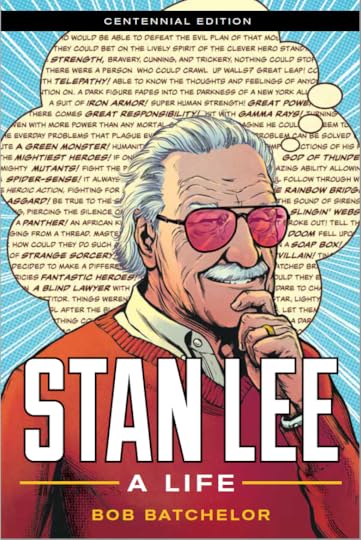
Stan Lee: A Life by biographer and cultural historian Bob Batchelor
April 11, 2024
THE LEADERSHIP METAMORPHOSIS: FROM COMMAND TO COLLABORATION IN A GLOBALIZED WORLD
As a historian and chronicler of business evolution, I’ve witnessed countless leadership paradigms rise and fall. Today’s leaders find themselves at a pivotal juncture, facing unprecedented challenges alongside boundless opportunities. Gone are the days of etched-in-stone leadership styles. The globalized, interconnected world demands a new breed of leader—one forged in the fires of authenticity, adaptability, and empathy.
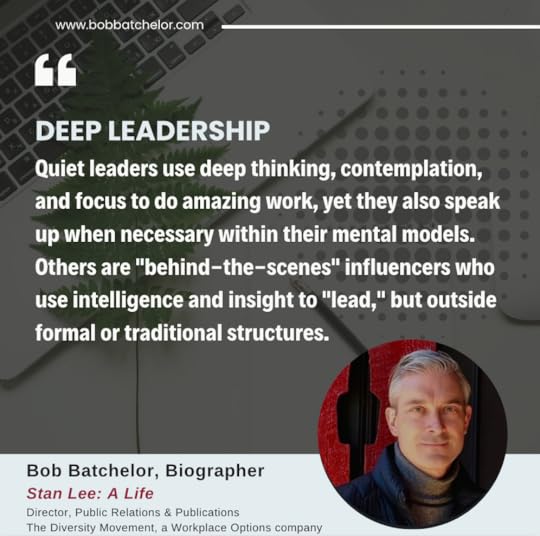
Deep Leadership — The cornerstone of success
Shattering the Hierarchies of OldRemember the days of command-and-control leadership? Strict hierarchies stifled collaboration and innovation. Today, leaders are dismantling these walls, embracing a more inclusive approach. Decisions are no longer dictated solely from top. Instead, in the best organizations run by the strongest leaders, they are crafted collaboratively, leveraging the collective wisdom of the organization.
What has emerged in a post-George Floyd and post-pandemic world—still grappling with both at the macro-level—is a redefining of leadership as culture-driven and culture-focused. Success is about leading—human being to human being!
What has emerged in a post-George Floyd and post-pandemic world—still grappling with both at the macro-level—is a redefining of leadership as culture-driven and culture-focused. Success is about leading—human being to human being!— Bob Batchelor, award-winning cultural historian From Inspiring Awe to Inspiring Action
Leadership is no longer about wielding raw power like a scythe. The days of the tyrannical “Type-A” leader are fading fast. The new aspiration is to ignite a fire within others. Authenticity, transparency, and empathy are now the new leadership cornerstones. By genuinely connecting with their teams, leading by example, and fostering trust, leaders empower individuals to flourish and innovate.
The Three Pillars of Modern Leadership1. Authenticity: Walking the Talk
Authentic leaders align their words with actions, forging genuine connections with team members, colleagues, and (most importantly) the people reporting to them. Vulnerability becomes a strength, fostering a safe space for open communication and honest expression. What happens when leaders are authentic: trust flourishes, psychological safety becomes a foundational part of organizational culture, and teams thrive.
2. Transparency: Shining a Light on the Path
Open communication is the backbone of a healthy organization. Transparent leaders cultivate a culture of honesty where information flows freely. Decisions are made collaboratively, building trust and fostering a sense of ownership among team members. This transparency drives engagement and alignment toward shared goals, propelling the organization forward.
3. Empathy: Feeling What Others Feel
Empathy is no longer a “soft skill.” Leaders who understand their team members’ experiences, emotions, and perspectives pave the way for a compassionate and supportive work environment. By demonstrating empathy, leaders forge deeper connections, mitigate conflict, and foster a sense of belonging. This, in turn, unleashes the full potential of the team.
Adaptability: The Key to Constant ChangeThe business world is filled with uncertainty. Leaders who can pivot quickly are the ones who excel. Adaptability requires a willingness to challenge the status quo, experiment with boldness, and learn from both successes and failures. All the while, they remain anchored by the organization’s core values and objectives.
Most employees are uncomfortable with the daily mix of expectations, power, and fear. An empathetic, deep leader not only recognizes these inherently human traits, but finds methods for incrementally decreasing the stress. Imagine a finely-tuned engine. It may run really well for a long time, but wear-and-tear will eventually catch up if not managed. What does “routine maintenance” mean when leading teams operating in a workplace filled with large dollops of anxiety and fear?
Successful leaders must be self-aware enough to consider that the human-to-human connection is paramount for sustainable accomplishment. In the future, the best leaders will be those who excel at psychological and sociological analysis, ultimately finding a deeper link to helping employees fulfill their dreams and aspirations.
The Dawn of a New Leadership EraThese pillars—authenticity, transparency, empathy, and adaptability—are the cornerstones of leadership in the 21st century. Leaders who embody these principles can navigate the complexities of the modern business landscape with grace and purpose. They can foster a culture of trust, collaboration, and inclusivity, empowering their teams to overcome challenges, seize opportunities, and achieve remarkable results.

This leadership metamorphosis centers on navigating and harnessing change. By embracing these guiding principles, leaders will shape the future of their organizations, while also empowering individuals to reach their full potential and leave their mark on the world.
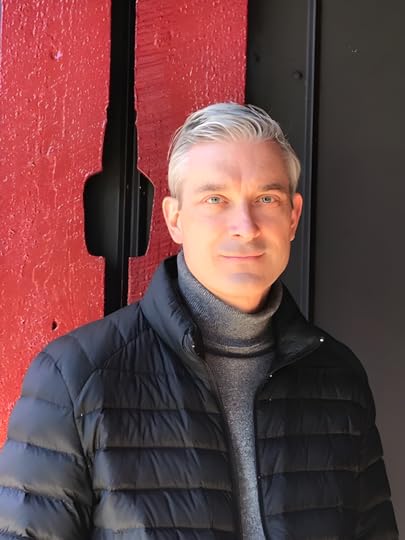
Bob Batchelor, award-winning cultural historian and executive communications strategist



